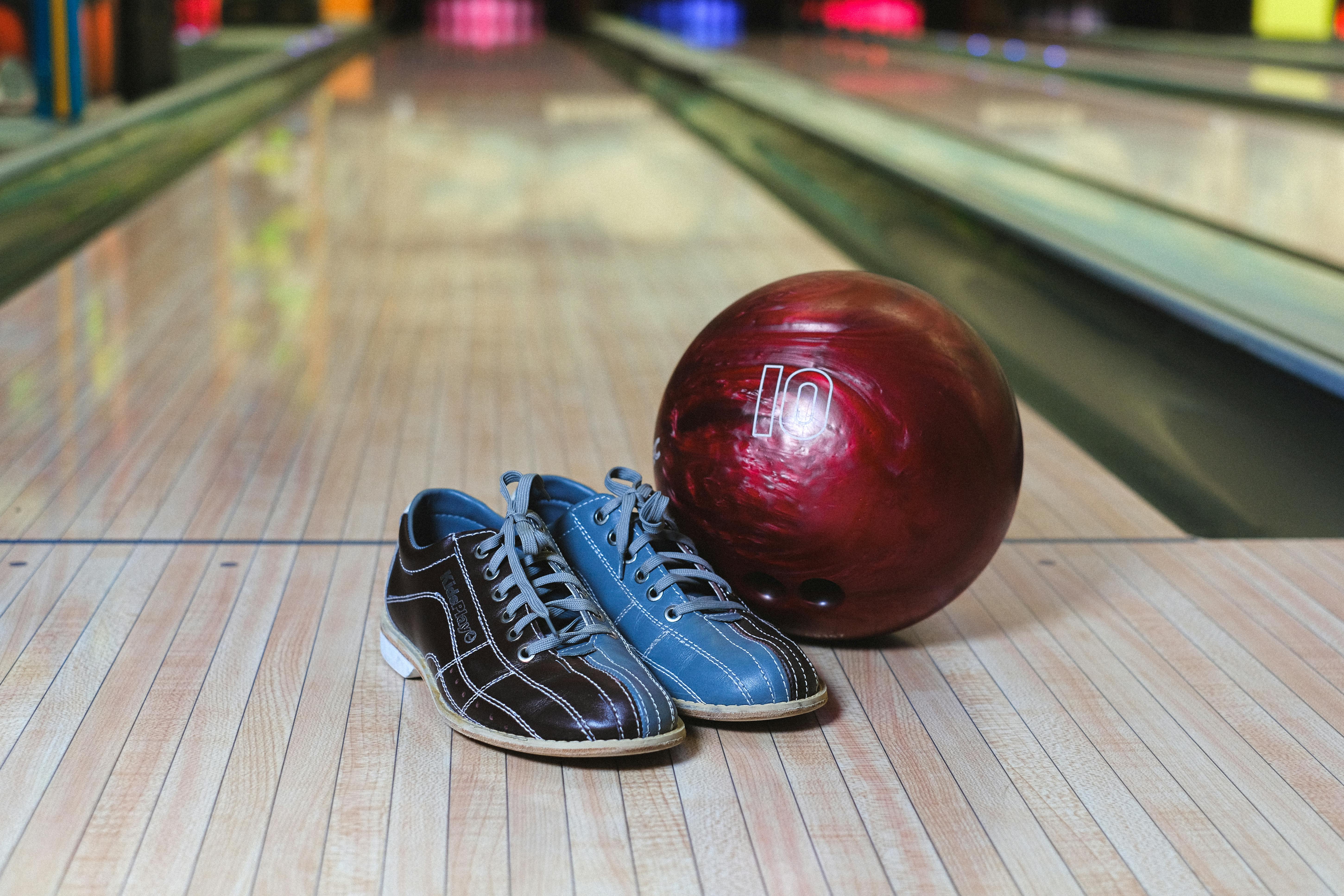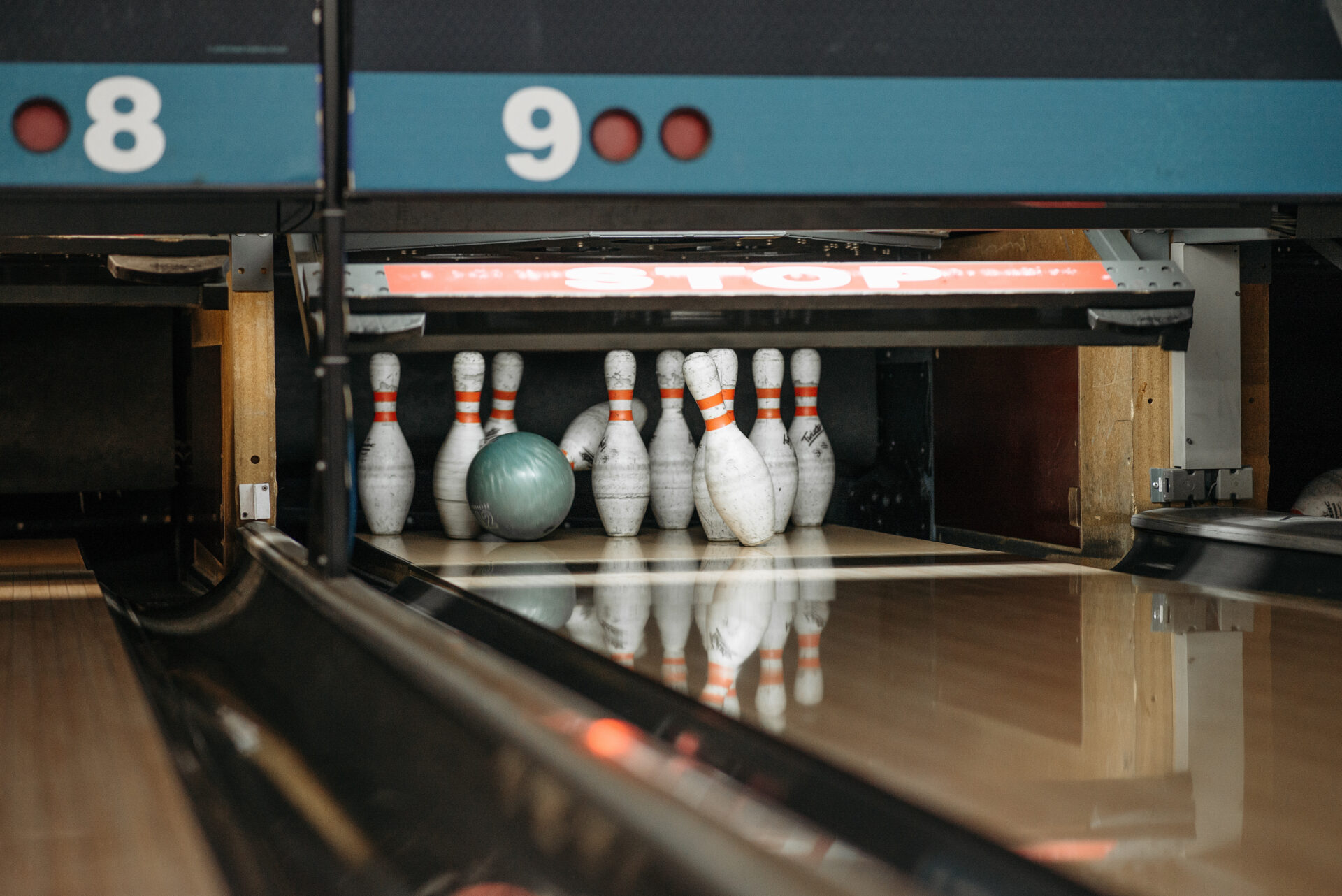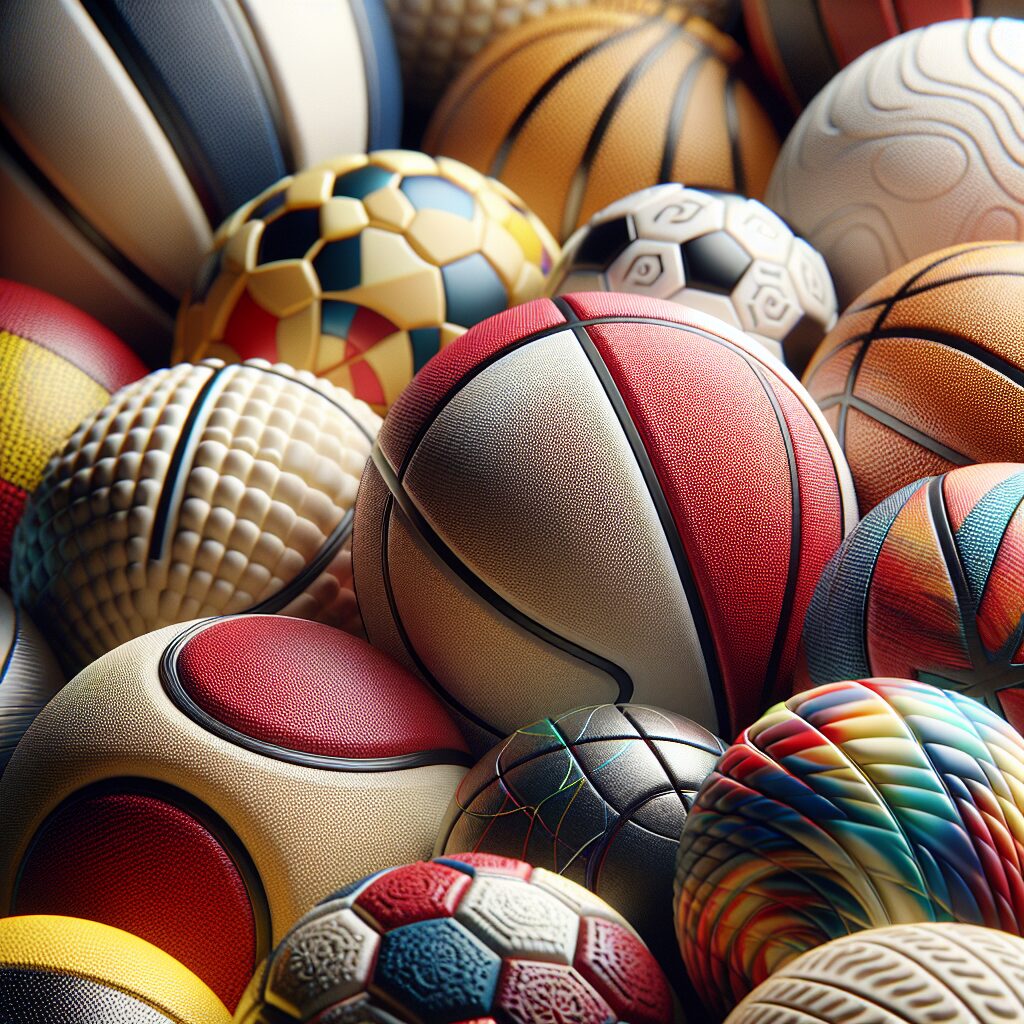A bowling ball is a piece of sporting equipment used to play the sport of bowling. It is typically made from a hard, solid material such as polyester, urethane, or plastic. The ball is spherical in shape and contains three holes that allow the bowler to comfortably grip and throw the ball. The weight of a bowling ball can range from 6 to 16 pounds (2.7 to 7.3 kg). The surface of the ball also varies depending on the type of lane and type of bowling being played.A bowling ball is typically made of a hard, polyester or urethane shell that is filled with a heavy core material such as rubber or resin. The outer shell is designed to provide durability and a consistent gripping surface. The core provides the weight and dynamic characteristics that allow the ball to hook and curve when thrown.
The Core of a Bowling Ball
The core of a bowling ball is the most important part of the ball. It is the part that determines how the ball will roll and react when it hits the pins. The core is typically made of a hard rubber material that is designed to be durable and long lasting. It also has to be able to withstand high pressures when thrown, so it needs to be strong and flexible. The size and shape of the core will vary depending on the type of bowling ball being used, as well as its intended use. The core can also be customized with different weights and materials to create different effects on the pins when thrown.
The core is also responsible for determining how much spin a bowling ball can generate when thrown down the lane. This spin is what helps create curve balls or other specialty shots that can make or break a game. Different cores can be chosen to achieve these effects, such as asymmetrical cores which are designed to encourage more hooking action in your shots.
Finally, some cores are designed with special features such as scoops or ridges which help reduce drag on the ball when it rolls down the lane. These features are especially useful for bowlers who want more control over their shots, as they help keep your ball in line with its intended path down the lane.
Overall, understanding how your bowling ball’s core works and how it affects your game can help you become a better bowler by allowing you to make more accurate shots and get better scores in tournaments or leagues. Different types of cores are available, so it’s important to consider your needs before choosing one for your game.
Coverstock of a Bowling Ball
The coverstock of a bowling ball is the outer material that covers the core. It is made of either plastic, urethane, or reactive resin. Plastic coverstock is used on beginner balls and provides the least amount of hook. Urethane coverstock has more hook potential than plastic but still not as much as reactive resin. Reactive resin provides the most hook potential and is used on most performance bowling balls. The type of coverstock chosen for a particular ball depends on the bowler’s skill level, desired reaction, and playing conditions.
Bowling balls with plastic coverstocks are usually cheaper than those with urethane or reactive resin coverstocks because they do not offer as much hook potential. They are also easier to control since they will slide through the heads and break down less quickly in oiled conditions. Urethane coverstocks offer more hook potential than plastic but don’t always provide the desired reaction in dry lanes due to their lack of friction when sliding across them. Reactive resin coverstocks offer the most hook potential out of all three types and are preferred by experienced bowlers looking for maximum performance from their ball.
When selecting a bowling ball, it’s important to take into consideration your skill level, desired reaction, and playing conditions so you can make sure to select a ball with the appropriate coverstock for your needs.
Coverstock
Coverstock is the outer layer of a bowling ball, and it plays an important role in how the ball performs on the lane. Coverstocks come in a variety of materials, each with its own unique characteristics that affect how the ball will react to friction on the lane. Different types of coverstocks have different levels of traction, hook potential, skid length and overall reactivity. Knowing which type of coverstock is best for your game can help you choose the right ball for your needs.
Urethane Coverstocks
Urethane coverstocks are softer than other types, which gives them more traction on dry lanes. They tend to have a delayed reaction to friction on the lane and will hook more at the end of their roll than other coverstocks. Urethane is great for recreational bowlers looking for an easy-to-control ball with good hook potential.
Reactive Resin Coverstocks
Reactive resin coverstocks are harder and more durable than urethane, and they provide a stronger reaction to friction on the lane. They tend to have a longer skid length before they start to hook, making them ideal for bowlers looking for increased control on dry lanes. Reactive resin covers are also good for bowlers who tend to throw slightly faster balls because they provide more control at higher speeds.
Particle/Proactive Coverstocks
Particle or Proactive coverstocks are less reactive than urethane or reactive resin covers, making them ideal for oily lanes where too much traction can be detrimental to performance. Particle/proactive covers will skid further down the lane before starting to hook, making them ideal for slower speed bowlers who need maximum control when throwing down oily lanes.
No matter what type of coverstock you choose, it’s important to remember that all bowling balls react differently depending on their surface preparation and drilling layout. The best way to find out which type of coverstock works best for your game is by testing different balls and adjusting drilling layouts until you find one that works best for you.
Urethane Coverstocks
Urethane coverstocks are a type of bowling ball coverstock that offers more hook potential than plastic or particle coverstocks. They are usually made from polyurethane and are known for their durable and long-lasting performance. Urethane coverstocks offer a level of grip that is ideal for bowlers who need extra hook on the lanes. Urethane coverstocks can be sanded or polished to alter their performance, depending on the bowler’s needs. This makes them highly customizable, as the surface of the ball can be manipulated to create more friction with the lane surface. Urethane coverstocks also provide more control than plastic or particle coverstocks, allowing bowlers to make adjustments to their shots more easily. The higher friction of urethane coverstocks also helps reduce deflection, making them an ideal choice for bowlers who struggle with accuracy. Overall, urethane coverstocks provide excellent performance, durability, and versatility for bowlers of all levels.

Reactive Resin Coverstocks
Reactive resin coverstocks are the most popular type of coverstocks used in modern bowling balls. They are made from a blend of synthetic rubbers that react to oil patterns on the lane. This gives them the ability to hook significantly more than other types of coverstocks. Reactive resin coverstocks also provide more longevity than their counterparts, as they are able to retain their shape and hook potential for longer periods of time. Reactive resin coverstocks can be divided into three main types: particle, solid and hybrid.
Particle reactive coverstocks use microscopic particles that become embedded in the rubber surface when exposed to oil on the lane. These particles increase friction between the coverstock and the lane, allowing for a stronger reaction to oil patterns and more overall hook potential.
Solid reactive coverstocks are made from a single layer of rubber that is much harder than particle reactive covers. They offer even more friction than particle covers, resulting in even stronger hook potential when exposed to oil on the lane.
Hybrid reactive coverstocks combine both particle and solid technologies into one coverstock. This gives them an even better combination of friction and durability which translates into more overall hook potential with less maintenance required over time. Hybrid reactive covers are most commonly used in modern bowling balls due to their superior performance characteristics compared to other types of covers available today.
What is Performance Enhancing Coating?
Performance Enhancing Coating (PEC) is a thin layer of material applied to the surface of an object to improve its performance characteristics. It can be used to make an object more durable, reduce friction, and increase corrosion protection. It can also be used to improve the optical properties of an object, such as increasing its reflectivity or decreasing its absorption of light. PECs are typically used in industries such as aerospace, automotive, medical, and electronics. PECs are also becoming increasingly popular for use in consumer applications such as eyeglasses and mobile phones.
Benefits of Performance Enhancing Coating
The main benefit of Performance Enhancing Coatings is their ability to extend the life and performance of objects. PECs are designed to protect against wear and tear caused by everyday use and exposure to environmental conditions. They also reduce friction between two surfaces which improves efficiency and reduces energy consumption. Additionally, PECs provide corrosion protection which helps extend the life of objects exposed to corrosive elements.
Optical Properties
Performance Enhancing Coatings can also be used to improve the optical properties of an object such as increasing its reflectivity or decreasing its absorption of light. This can be beneficial for applications such as eyeglasses where improved clarity is desired or for solar panels where increased efficiency is desired. Additionally, PECs can be used in medical imaging equipment such as endoscopes or CT scanners to increase image quality.
Applications of Performance Enhancing Coating
Performance Enhancing Coatings have a wide range of applications including aerospace, automotive, medical, electronics and consumer products. In aerospace applications they are used on aircraft wings and fuselages for better aerodynamic performance; in automotive applications they are used on engines; in medical applications they are used on implants; in electronics they are applied on circuit boards; and in consumer products they are applied on eyeglasses and mobile phones.
Conclusion
Performance Enhancing Coatings have numerous benefits which make them ideal for a variety of applications. They provide improved durability, reduced friction, corrosion protection, improved optical properties, and increased efficiency for many different products. As technology advances so too do the capabilities of Performance Enhancing Coatings allowing them to be applied in ever more innovative ways across multiple industries worldwide.
Different Types of Drilling Patterns
Drilling is a process in which holes are created in a material for a variety of purposes. It can be done with various tools, such as manual or powered drills. Depending on the purpose, different drilling patterns can be used. These patterns are designed to create different shapes and sizes of holes, as well as providing enhanced strength and durability to the finished product. Here are some common types of drilling patterns:
Straight Drilling Pattern: This is the most basic type of pattern that involves drilling straight lines into a material. It is used for making small holes such as those needed for screws or nails. The resulting hole is usually round or oval in shape.
Intersecting Drilling Pattern: This type of pattern involves intersecting two straight lines at an angle to form an X-shape. This pattern is often used for making larger holes, such as those needed for electrical outlets or plumbing fixtures.
Circular Drilling Pattern: This type of pattern involves drilling circular holes that are concentric with one another. These circular holes are usually used for creating large openings, such as those needed for pipes and conduits.
Angled Drilling Pattern: This type of pattern involves drilling angled holes that have an oblique angle with respect to the surface being drilled into. It is typically used when creating slots or slanted openings in materials such as metal or wood.
Overall, there are many different types of drilling patterns available depending on the application and purpose. Each one has its own advantages and disadvantages, so it’s important to choose the right one for your project in order to achieve desired results.

Conclusion
A bowling ball is a complex piece of equipment made of a variety of materials. Most bowling balls have an outer shell of polyester or urethane, while the core is made up of various types of filler material, such as resin, rubber, and other materials. The pins used in the game are typically made out of plastic or wood. Finally, the ball itself may also have been given a coating to make it more durable and to add color.
Overall, there is a great deal of science and engineering that goes into designing and manufacturing a bowling ball. Knowing what a bowling ball is made of can help you choose the right one for your game and ensure that you get the best performance out of it.




